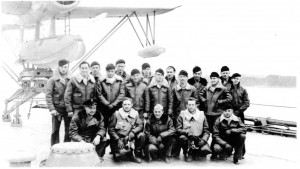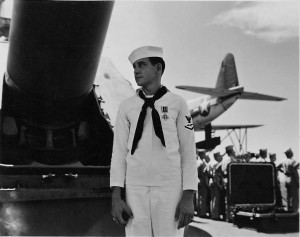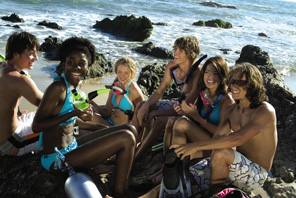Story written by PADI Diving Society Member and PADI Open Water Scuba Instructor Maj. Joshua Vance.
In this day of modern technology and current events, it has become easy to forget about history; in particular, World War II and the brave actions of so many of our Veterans. The entire country mobilized and persons from all walks of life volunteered to defend the country. The following story is one of great heroism in the face of battle, and the project to locate and bring one of those fallen servicemen home.
The date was 31 January 1944, in a place called Kwajalein Atoll, in the Marshall Islands, 2700 miles southwest of Hawaii. Most people had never even heard of Kwajalein until U.S. forces invaded the atoll in an operation codenamed “FLINTLOCK”. On that afternoon, an OS2N-1 Kingfisher scout/observation plane was launched from the battleship USS New Mexico (BB-40). Barely two hours later the plane was shot down by anti-aircraft fire from Ebeye Island.
The radioman, Harrison “Dub” Miller, felt the plane shudder after being hit; he immediately smelled and saw high-octane aviation gasoline in the cockpit and notified the pilot of the leaking fuel. The pilot replied that he was hit bad and instructed him to bail out. Realizing the pilot was unable to fly the plane due to his injuries, the radioman told the pilot that he would try to land the plane instead of bailing out, in an effort to save the pilot’s life. Despite having no prior flying experience, the radioman landed the plane from the rear cockpit of the Kingfisher utilizing the duplicate set of controls. But with no duplicate throttle in the rear cockpit, and because the pilot had lost consciousness there was no way to reduce speed for the landing, and the wingtip pontoons that provided lateral stability were torn off on impact with the water.
After landing, the radioman got out of his seat and climbed onto the wing and made it to the front cockpit to shut off the engine. He started to unhook the pilot from his harness, but the plane capsized before he could succeed. He dived under the surface numerous times to try to free the pilot but was unsuccessful. He spent the next two hours floating about a half mile offshore of an enemy-controlled island until a yard mine sweeper, the USS YMS-383, made two attempts to rescue him, the first attempt being repulsed by enemy fire. On the second attempt the YMS-383 recovered the radioman, and they attempted to tow the aircraft out of range of enemy fire. But after only 200 to 300 yards, the plane began to sink and had to be cut free. There was no chance to retrieve the pilot’s body from the cockpit, and he sank with the plane. The radioman was awarded the Distinguished Flying Cross for his heroic actions on that day.
More than 68 years later, a dedicated team of researchers, divers, and veterans have set out to locate the plane. The search has begun…
Stay tuned to the PADI Diving Society section at the PADI Blog for updates on the search for the Kingfisher as well as an interview by Maj. Joshua Vance, author of this story and one of the men searching for the Kingfisher.
Photo Credit:
Photo of the Kingfisher from the collection of Capt. Ellis Zacharias, C.O. from 9 September 1943 – 14 Setpember 1944, courtesy of Capt. Jerry Zacharias, USN (Ret.)
Photo of Harrison “Dub” Miller courtesy of his grandson, Mr. Sam Miller


